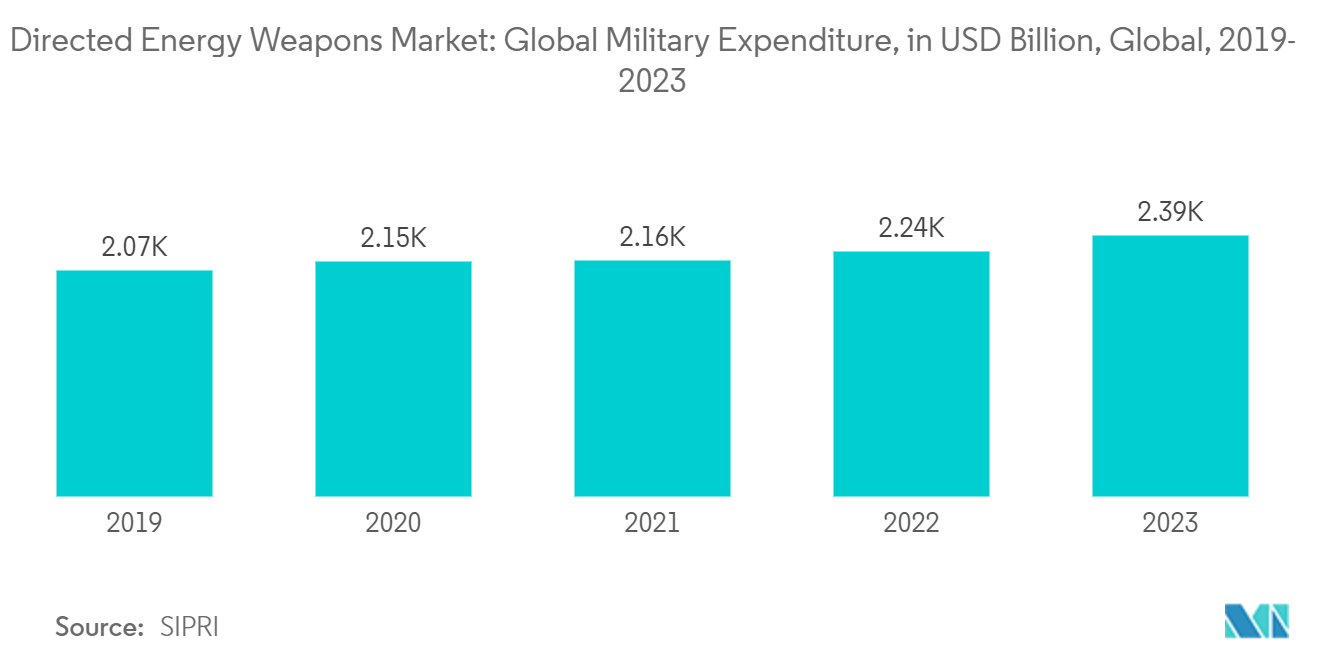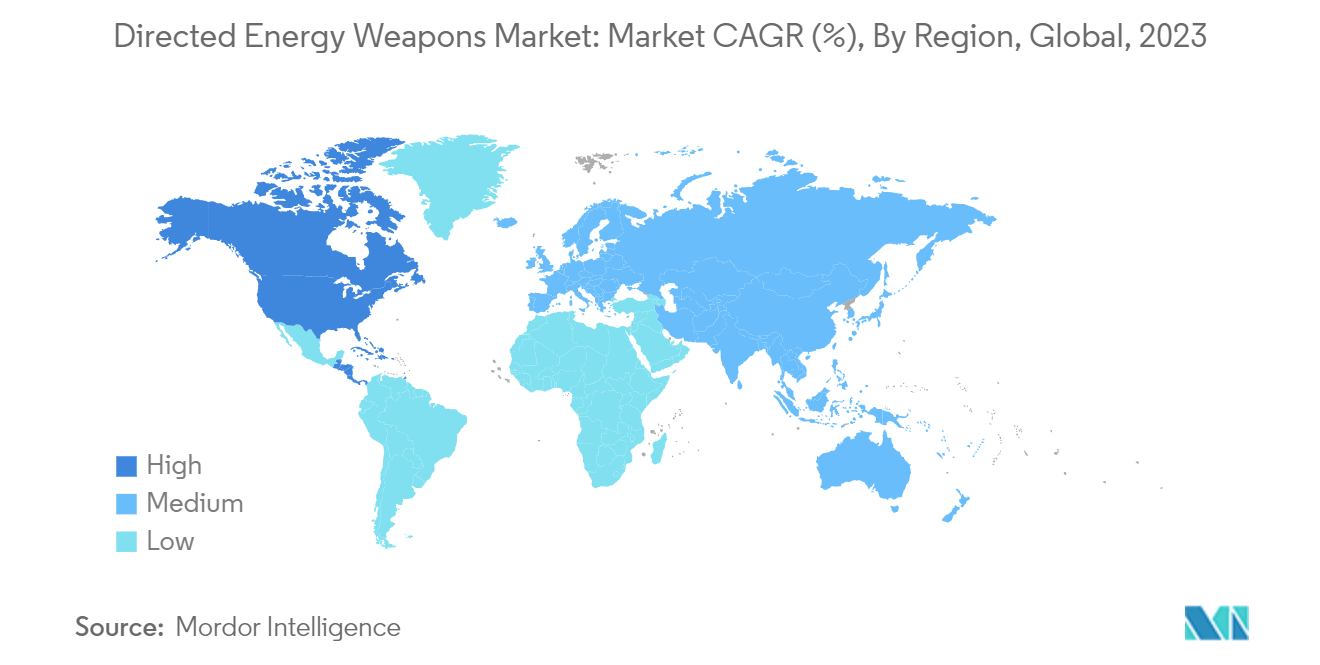Market Trends of Directed Energy Weapons Industry
The Sea Segment is Projected to Witness the Highest Growth During the Forecast Period
Propelled by robust defense spending and a drive to adopt directed energy weapon (DEW) technology, the sea segment is expected to record the highest CAGR during the forecast period. Governments worldwide, notably the US, are arming their combat ships, from destroyers to frigates, with DEWs to counter a spectrum of threats, be it from ships, UAVs, or missiles. The US Navy, in particular, has been at the forefront, integrating DEWs into its naval arsenal for over half a decade. Highlighting this commitment are flagship programs like the High Energy Laser Counter-ASCM Program (HELCAP), Optical Dazzling Interdictor, Navy (ODIN), Solid-State Laser Technology Maturation (SSL-TM), and the Surface Navy Laser Weapon System (SNLWS), famously known as HELIOS.
In April 2024, the UK Royal Navy announced plans to roll out its DragonFire laser-directed energy weapon (LDEW) systems, with deployment slated to commence in 2027. This accelerated timeline, a significant leap from the previous 2032 projection, could be credited to acquisition reforms spearheaded by the Ministry of Defence (MoD) in the 2024-25 financial year. The development of these LDEW systems is a collaborative effort led by MBDA UK, with key contributions from Leonardo and QinetiQ, facilitated through the MoD’s Defence Science and Technology Laboratory (Dstl).
The escalating challenges of piracy, terrorism, and maritime disputes have underscored the critical need for bolstered naval defenses. Directed Energy Weapons (DEWs) have emerged as a pivotal solution, offering a non-lethal means to neutralize adversary vessels and equipment. As the focus on protecting crucial maritime assets, such as ports and offshore platforms, intensifies, the demand for advanced directed energy technologies continues to surge.

North America is Expected to Dominate Market Share During the Forecast Period
The North American market, spearheaded by substantial investments from the US Department of Defense (DoD), is at the forefront of integrating directed energy weapon technology into its military branches. In recent years, the DoD struck deals with major players such as RTX Corporation, Lockheed Martin Corporation, and Boeing Company, emphasizing advancing and deploying these cutting-edge weapons.
Under the Self-Protect High Energy Laser Demonstrator (SHiELD) Advanced Technology Demonstration Program, the Air Force Research Laboratory is leading the charge in developing laser systems for fighter jets, bolstering their defense against incoming missiles. In a significant move, Lockheed Martin clinched a USD 26.3 million contract from the US Air Force to craft a fiber laser set for testing by 2024.
In December 2023, nLIGHT Inc. secured a USD 34.5 million contract over 18 months to supply a High Energy Laser (HEL) for the US Army’s RCCTO DE M-SHORAD initiative. Acting as a subcontractor to KORD Technologies, nLIGHT was tasked with creating a 50 kW-class laser system for seamless integration onto Stryker combat vehicles. This HEL system is designed to bolster air and missile defense, targeting a range of threats from crewless aircraft systems to rockets, artillery, and aircraft. Notably, directed energy laser weapons offer a cost-effective alternative, boasting a larger operational capacity and a reduced footprint compared to traditional kinetic weapons.


